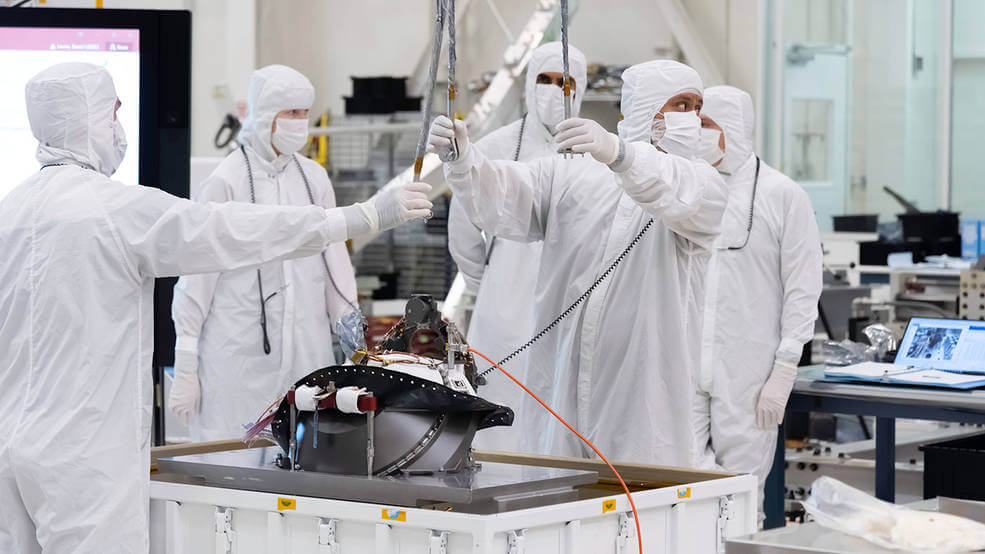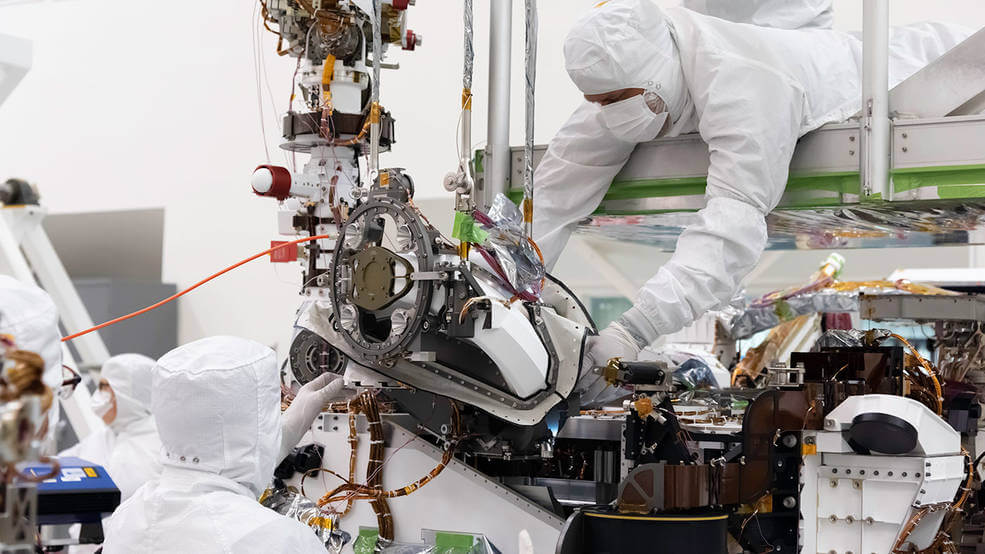In brief: With less than 333 days to go, NASA's JPL has reached an important milestone in completing the assembly of its Mars rover. Called the bit carousel, the toolkit installed in the front end of the rover contains nine drill bits to help it in sample acquisition and surface analysis of the planet where it's expected to land by February 18, 2021.
NASA's successor to the Curiosity rover is called the Mars 2020 Rover, which features an improved design, new software, narrower but larger tires made from thicker aluminium, and a new Sample and Caching System that will enable it to collect and save rock samples for a possible future study by scientists.
Unlike Curiosity that studied its collected samples onsite through the rover's on-board laboratory, the Mars 2020 Rover has new capabilities including a larger turret at the end of its robotic arm that houses a new coring drill, enabling it to sample and cache minerals which it will later seal in tubes and place on the martian surface for a potential pick up by another space mission in the future. The larger turret also has two science instruments and a color camera for close-up surface inspection and taking "selfies" for engineering health checkups.
Recently, NASA's JPL team successfully installed the bit carousel, machinery that "contains all of the tools the coring drill uses to sample the Martian surface and is the gateway for the samples to move into the rover for assessment and processing," said Keith Rosette, sample handling delivery manager for the Mars 2020 Rover.

The bit carousel contains nine drill bits for sample acquisition and analysis: "Two for abrading, one for regolith (rock and soil) and six for coring. The coring and regolith bits are used to place Martian samples in a clean sample collection tube, while the abrader bit is used to scrape the top layers of rocks to expose un-weathered surfaces for study."
Depending upon the particular drilling requirement, the bit carousel "maneuvers the appropriate bit into position so that the drill at the end of the rover's robotic arm can extract it" with the bit returning to its carousel after the drilling is complete.
The process for core sampling sounds just as mechanically pleasing where "a sample tube is inserted inside the appropriate bit before the carousel moves the combination into position for the drill. Once the sample tube has been filled, the robotic arm returns the drill bit and tube to the carousel, where they wend their way to processing stations and storage."
Calling it the "last piece of the Mars 2020 Rover's Sample Caching System", Project Manager John McNamee termed the Rover's interior as "essentially complete" with a battery and camera used during landing to be installed in the coming weeks.
The Mars 2020 Rover is destined for the Jezero Crater and for those interested in getting a souvenir boarding pass to the Red Planet, NASA has shared a webpage where you can submit your name (until September 30, 2019) and make it travel to Mars with NASA's 2020 mission.
